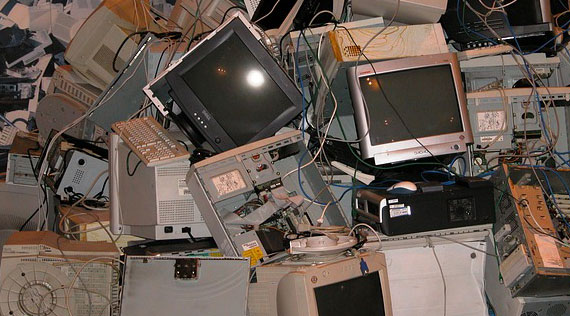
SEATTLE (Scrap Monster): A report published jointly by the International Telecommunication Union (ITU) - the UN agency for information and communication technologies, the UN University (UNU) and the International Solid Waste Association (ISWA) states that global e-waste generation rose alarmingly in 2016. The report titled ‘Global E-waste Monitor 2017’ also suggests significantly lower recycling levels for e-waste.
A total of 44.7 million metric tonnes (Mt) of e-waste was generated during 2016, significantly higher by 8% upon comparison with 2014. The e-waste generation had totaled only 41.4 Mt during 2014. The report predicts that global e-waste is likely to grow by 17% to total around 52.2 Mt by 2021.
Out of the 44.7 Mt of global electronic waste, only 8.9 Mt of e-waste was recycled through appropriate channels in 2016. This translates to a very low recycling rate of around 20%, the report said. The poor recycling rates have had a negative economic impact. The value of recoverable materials including gold, silver, platinum and other high value metals were estimated at nearly 55 billion euros in 2016. Alarmingly, 1.7 Mt of e-waste were thrown into residual waste in developed countries. The fate of 34.1 Mt of e-waste is unknown. These are most likely dumped, traded or recycled under inferior conditions.
Among various regions, Asia generated the largest amount of e-waste. The region’s e-waste generation totaled 18.2 Mt, followed by Europe (12.3 Mt), the Americas (11.3 Mt), Africa (2.2 Mt) and Oceania (0.7 Mt). In collection rates, Europe led with 35%. The collection rate in the Americas and Asia were much lower at 17% and 15% respectively. The per-inhabitant e-waste in the Oceania region recorded the highest level of 17.3kg, closely followed by Europe with 16.6 kg. The Americas generated 11.6 kg of e-waste per inhabitant, whereas the per-inhabitant generation level in Asia was 4.2 kg. Africa generated only 1.9 kg per inhabitant.
According to the report, only 41 countries provide official e-waste statistics. A growing number of countries across the globe are seen adopting e-waste legislation. However, the type of e-waste covered by legislation differs considerably throughout countries. Presently, 66% of the world population spread across 67 countries is covered by national e-waste management laws. It must be noted that only 44% were covered in 2014. India, which adopted the legislation in 2016, mainly contributed to this tremendous growth.



| Copper Scrap View All | |
| Alternator | 0.41 (-0.01) |
| #1 Copper Bare Bright | 4.26 (-0.1) |
| Aluminum Scrap View All | |
| 356 Aluminum Wheels (Clean) | 0.83 (0) |
| 6061 Extrusions | 0.73 (0) |
| Steel Scrap View All | |
| #1 Bundle | 360.00 (0) |
| #1 Busheling | 380.00 (0) |
| Electronics Scrap View All | |